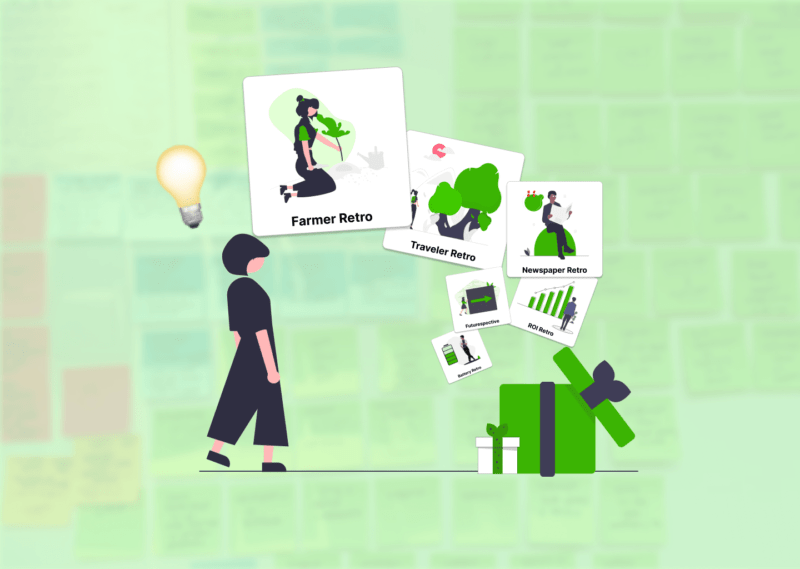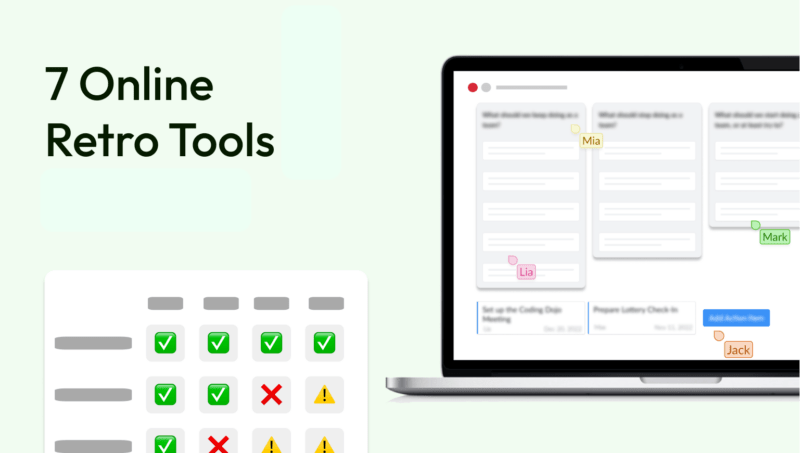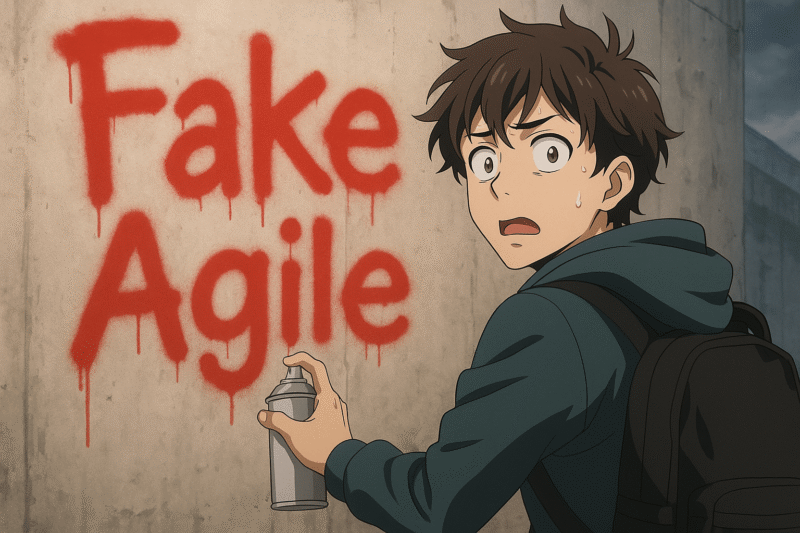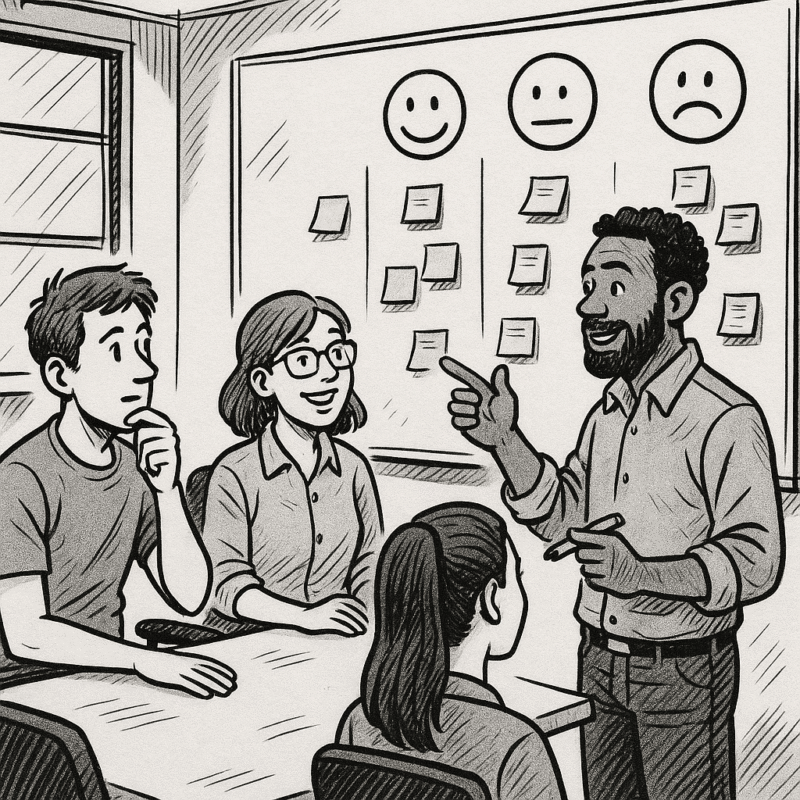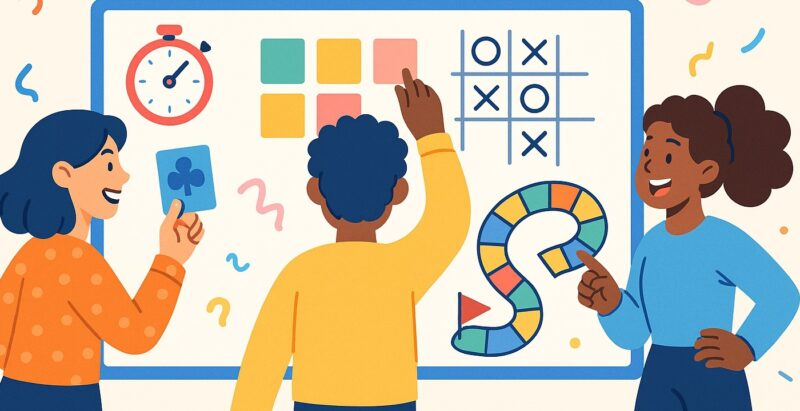Everyone starts small: in Agile typically, you start with a handful of small teams that contribute their part to the bigger picture. In the long run however, as your company grows or the number of teams increases, a need for communication arises, and with it, cross-functional teams. Because soon, dozens of larger "areas" are working to map your company's value stream.
The problem: in a scaled environment, it is costly and complex to efficiently coordinate many agile teams. So that things don't go haywire, you need a mature organizational concept. This is where an Agile Release Train comes into play. I will show you how a release train in Agile is structured, how it works – and how your company can benefit from it.
Agile release train definition
An Agile Release Train – or "ART" – is a long-term working group typically with 50 to 125 people that plans, develops, implements, tests and releases a product together. The group is organized into sub-teams. The individual teams work together to create high value for the customer. The Agile Release Train planning and the approach of the teams is strongly oriented to the value stream of the company (see also “Value Stream Mapping”).
The Agile Release Train unites all areas of an organization. This means that it is structured cross-functionally. This means that the ART brings together not only teams, but also different departments - e.g. Product Management, Development and Quality Management.
Several ARTs form a Solution Train. A Solution Train coordinates the collaboration of the different Agile Release Trains as well as the embedding of external systems such as a suppliers. By the way, you can learn more about the levels in which a company is divided according to the Scaled Agile Framework in our article" Put simply: What are the four levels of the scaled agile framework? "".
Characteristics of a Release Train in Agile
An Agile Release Train in SAFe® bears these characteristics:
Cross-functional
All areas of the organization work together: hardware, software, testing, compliance, etc. This also means: An Agile Release Train aligns teams to a common task.
Source release train diagram: my agile partner
Permanent
Team members work together permanently – and not just for one project, for example. The result: they automatically develop further. Through their cooperation with employees with other core competencies, they expand their knowledge.
Autonomous
Employees and teams work in a self-organized manner. This promotes their ability to think innovatively and repeatedly solve problems themselves. In this way, they can continuously develop – or create greater added value for the customer.
Roles: How Agile Release Trains are made up in practice
For an Agile Release Train in SAFe® to deliver results smoothly and efficiently, it needs active facilitators who have internalized the agile way of working. Crucial to this are these roles:
Scrum Masters: in the Release Train in Agile, the Scrum Master leads his team as a so-called servant leader through all processes until the product launch. He accompanies and coaches the team and leads meetings, sprints and implements best practices. Optimally, a Scrum Master supervises a maximum of two teams.
Product Owner: The Product Owner is responsible for the benefit, i.e. the added value for the customer, that one or more teams produce. For example, he prioritizes the product backlog with the customer requirements.
Release Train Engineer: the Release Train Engineer – also known as the Agile Release Train Manager – is responsible for overseeing the release train as a whole, sort of like a Scrum Master for the 50-125 people at a higher level. His/her goal is to simplify program execution, remove obstacles in work processes, and manage risks and dependencies between teams.
Product manager: the Product Manager is responsible for the product vision and strategy. To do this, he or she communicates with internal and external stakeholders. This enables him to define and meet customer requirements.
System Architects: System Architects – also known as System Engineers – keep an eye on the overall construct. They pay particular attention to ensuring that key system elements and interfaces mesh smoothly.
Agile Release Train team members: the individual team members are the many small pillars that create the big picture. They collaborate across functions and focus on incremental development of product features. They are typically organized into teams.
Business Owners: Business Owners are the key internal stakeholders of the release train in Agile. They are responsible for ensuring that the ART achieves the targeted business outcomes. In practical terms, they do not always have to be owners; they may also be managing directors or similar.
Most Agile Coaches and Scrum Masters run in circles...
...fixing superficial symptoms. Time to use psychology to foster sustainable mindset change.
Benefits of the Agile Release Train
You now know how a release train in Agile is structured and how it works. How do you benefit from working in an ART?
Shared vision: the Agile Release Train links the business strategy with the team level. In this way, your company increases the chance that the vision is implemented in all teams.
Frictionless collaboration: the Agile Release Train promotes efficient collaboration between many teams where more communication becomes necessary. Above all, it keeps progress and cross-team dependencies in mind.
Faster results: a classically built Agile Release Train visualizes various work methods and processes and uses specific metrics & meetings. Thus, it accelerates the targeted communication of teams and thus their work.
Lower costs: a release train in Agile lowers costs (at least theoretically, if implemented correctly). After all, the efficient way in which teams work often makes subsequent rework in development unnecessary.
Special meetings in the Release Train (Agile)
A release train in Agile requires so-called release train sync meetings. These meetings ensure that teams can maintain their progress, resolve significant issues, and discuss risks. You can mainly use these meeting formats:
- Inspect and Adapt,
- ART Sync
- Scrum of Scrums
- PO sync
- Program Increment Planning (PIP)
- system demo
Release Train Sync meetings are essential in SAFe® to keep the different teams working towards the same goal. Only if they know what the status quo is in the other teams, they can tackle their tasks efficiently. Thus, the meetings are a central platform to synchronize the common vision and the common goal.
Source: Agile Release Train Sync Meetings – Management Bliss
How to launch an ART correctly
To properly implement an ART, you need to take your time. Especially in large organizations, you need a lot of oversight for Agile Release Train planning. However, with patience and the right experts at hand, you can achieve Agile Release Train launch readiness even with complex organizational structures. You can basically approach the launch in 10 steps:
1. Train SAFe Program Consultants (SPCs)
SAFe Program Consultants lead the agile transformation by guiding leaders and stakeholders with their knowledge. In doing so, they also teach how the ART works successfully.
2. Train Lean Agile Leaders
Lean Agile Leaders implement the principles of SAFe in the organization and review where the transition to agile is still stuck. Train them to do this.
3. Identify value stream
To achieve better results more efficiently with an ART, you need to identify the most important value streams in the company. Only with these can you later set up an ART that will benefit your company. The common practice for this is the so-called Value Stream Mapping.
4 Setting up the ART
Now you set up the ART and distribute the responsibility to the teams involved. They create, implement, and verify the value for your company and ultimately for the customer.
5. Define roles
Define the roles that will lead the ART to the right goal. Crucial roles are played by the responsible persons already mentioned above.
6. Refine the product backlog
Product managers and stakeholders develop a list of features that create a shared vision for the ART. The features are then transformed into user stories. Teams can then establish a plan for iterations.
7. Train teams for the framework
Train the teams for SAFe.
8. PI Planning and launch of the ART
To align teams on the work ahead, have them meet. This ensures a shared vision and goal. After that, you can launch the ART.
9. Execute PI Planning
Put PI Planning into practice so teams have a concrete roadmap for their sprint.
10. IP Iteration
Now you can start "Innovation" and "Planning" – better known as IP Iteration. It is the last iteration within the PI.
How to set up your first Release Train in detail is shown in 10 steps in the video "Launching Agile Release Train" – we won't go that deep here :)
Conclusion
An Agile Release Train aligns teams on a common task – creating better results faster. If you want to learn more about how to successfully scale agile methods, feel free to check out Project Scagile This shows you how to properly approach an agile transformation in several free videos & webinars. Feel free to take a look.


